Useful properties of leek onions, methods of growing them and varieties of varieties
Leeks are not very popular among Russian gardeners. Perhaps the reason for this is the long growing season, reaching up to 200 days, or the belief that the main component in onions is the bulb, and not the stem, like a leek. However, in many countries of the world, it is not onions, but leeks that have become the leader among greens on the table. For example, it is used in the famous French onion soup.
Description of the species, origin and development
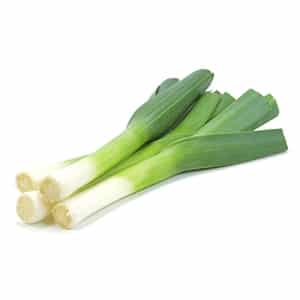 Externally, leeks differ from many of their “brothers”: in the first year of life, leaves and a thick white stem actively grow. It is this that is a valuable part of plants of this species of the onion family.
Externally, leeks differ from many of their “brothers”: in the first year of life, leaves and a thick white stem actively grow. It is this that is a valuable part of plants of this species of the onion family.
Asia is considered the homeland of leeks; the plant was brought there in its wild form from the Mediterranean, where it was known 4 thousand years ago. Since then, leek has been cultivated everywhere, including in all vegetable growing zones of Russia.
Varieties of leeks
Leeks have dozens of varieties that differ in terms of ripening - early, medium and late.
Attention! Winter varieties with a growing season of 180-200 days are not suitable for growing in northern latitudes; they do not have enough time to ripen.
Early
They are considered the most productive and ripen quickly, already at the end of summer. A characteristic feature is a thin stem with a lightened part of 30-45 cm. Ripens 90-140 days after germination. Weight on average 300 g.
Varieties that ripen in summer include:
- Columbus. A variety of Dutch selection, stress-resistant, tolerates temperature changes and cold well. Fruitful, early ripening. From germination to harvest – 85 days. The plant is powerful, the volume of cut greens reaches 400 g. The leaves are waxy, flat, and can reach a height of 80 cm. Columbus leeks are stored for a long time without losing their taste and commercial qualities. Recommended for universal use. When grown, it does not require repeated hilling to whiten the productive part.
- Vesta. Domestic variety. Begins to ripen after 120 days after sowing. Productivity is about 6 kg per m², plant length 100-140 cm, weight 270-300 g. Universal in use, resistant to diseases. Needs hilling. In regions with cool climates, it is recommended to grow seedlings.
- Winner. The plant is of medium height, leaves with a slight waxy coating, the length of the bleached part is 20-25 cm, the weight of edible greens is 200-230 g. You have to wait about 135 days for the harvest. It has a delicate, semi-sharp taste. Frost-resistant, suitable for cultivation in northern regions.
Medium ripening
They ripen in autumn, their “life” is 150-160 days. They have larger dark leaves that are tightly located on the false stem. Mature plants can withstand temperatures as low as -15°C. Shelf life – no more than 2.5 months.
Of these varieties, the following are especially distinguished:
- Casimir. Developed by Russian specialists, recommended for use throughout Russia. The variety is valued for the high quality of the bleached part of the plant. The shoots are tall, the leaves are located almost vertically, and have a dark green color. Demanding on moisture, loves feeding. Period from full germination to cleaning is approximately 180 days.About 4 kg of product per 1 m². It is preferable to grow as seedlings.
- Elephant's trunk. It has a long, massive stem, which is how it got its name. It has high consumer qualities and a sweetish taste. The height of the plant is 60-70 cm, the weight of the productive part is 150-200 g, 4-4.5 kg of product is collected from 1 m². The variety ripens in 140-150 days. Not afraid of frost, resistant to major diseases. Can be stored for 2-3 months.
- Elephant. It is distinguished by a record length of 1.5 m and high quality of the bleached part. The edible mass exceeds 300 g. The harvest can be harvested after 135-145 days. They are grown by seedlings; hilling is required.
Late ripening
They ripen for more than 6 months, which is why they are also called winter varieties. They have dark, densely spaced leaves with a bluish, waxy coating, and are characterized by a short stalk and slow development. Cold-resistant, harvesting in the southern regions occurs from November to April.
These varieties include: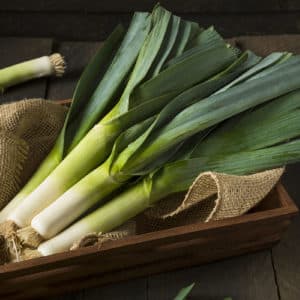
- Alligator. Productivity is high, weight up to 300 g, disease resistant, good shelf life. The taste is delicate with a slight aroma of garlic. Ripening period – 200 days.
- Karantansky. Developed in the USSR, it has excellent characteristics: weight 250-325 g, 175 days to ripening, yield - 2.5 kg per m², slightly spicy, pleasant taste. Caranta leeks are ready for harvesting after 200 days. In cold regions it is grown exclusively by seedlings.
- Bandit. The variety is valuable for its resistance to unfavorable climates. The leaves are dark green in color with a bluish tint. They are harvested at the end of October; in the south it is practiced to overwinter the Bandit in the garden, followed by harvesting in the first spring months. The yield is 3-4 kg per m².
- Autumn giant. A Dutch variety of impressive size with a thick white stem. Maturation is extended over 1.5 months. If stored properly, it can delight you with its greenery all winter long.
Chemical composition, trace elements, vitamins and beneficial properties
Leeks have a unique property: during storage in the bleached part of the plant, the level of ascorbic acid almost doubles. And the high content of magnesium, iron, sulfur, phosphorus, potassium and calcium makes leek the most valuable product on our table. Essential oil, nicotinic acid, thiamine and carotene give onions healing properties.
Ripening time and yield
Early-ripening varieties will be ready in 90-140 days, mid-ripening or autumn varieties can be harvested 150-160 days after germination, and the harvest of winter varieties will begin after 180-200 days.
The yield of leeks varies depending on the variety. The average weight of the product is 16-20 tons per 1 hectare of land. Climatic conditions and quality of care when growing leeks directly affect the volume, presentation and keeping quality of the crop.
Disease resistance
Leeks are more resistant to major diseases of the Allium genus than onions. In particular, relative resistance to peronosporosis is noted.
Characteristics of the bulb, description of appearance, taste
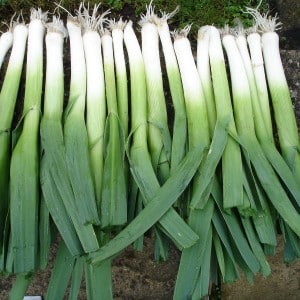
Leeks are valued for their long white bulb, which is also called a false stem, or “leg” - it is much more flavorful than that of onions. Sweetish-spicy, delicate and delicate flavor is ideal as a seasoning for soups, salads, vegetable and meat stews, and many other dishes.
After germination, leek seeds look like tiny sprouts that have just sprouted for two months.But after a few months the plant amazes with its size: the height reaches 1.5 m, the false stem can weigh 400 g.
The leaves resemble garlic, the root system is well developed, but is much smaller in volume than the above-ground part of the onion.
Reference. The “leg” of each variety has its own size. To increase it artificially, the base of the stem is not allowed to turn green; for this, the onion is hilled.
For which regions is it best suited and what are the climate requirements?
According to the results of variety trials, the following varieties are suitable for central Russia: Elephant, Vesta, Kazimir, Columbus, Karantansky.
Leek varieties for Siberia and other cold regions: Vesta, Columbus, Pobeditel.
But the southern regions can take advantage of the entire varietal range of leeks.
The best taste is achieved in regions with a mild and humid climate. The seeds germinate at temperatures around 3-4°C, but enter the growth phase at a minimum temperature of 15-20°C, although leeks can withstand temperatures down to -15°C.
Along with high light requirements, this plant exhibits sensitivity to lack of water and needs frequent watering.
Main advantages and disadvantages
Advantages: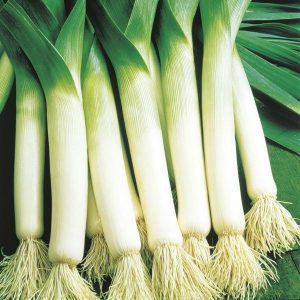
- cold-resistant;
- resistant to diseases;
- low calorie;
- a source of iron, calcium, magnesium, B vitamins, as well as PP and E.
Flaws:
- after consumption, like garlic, it gives a specific smell from the mouth;
- may cause flatulence;
- Harmful for people suffering from ulcers or stomach inflammation.
What is the difference from other varieties:
- edible at different stages of development;
- grows leaves until late autumn;
- During storage, the content of ascorbic acid increases.
Beneficial properties for the human body
Regular use leeks in food contributes to the treatment and prevention of such diseases And states: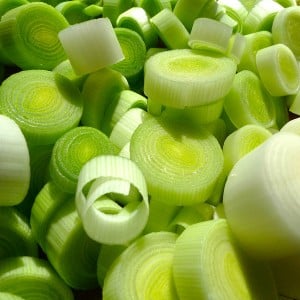
- atherosclerosis;
- avitaminosis;
- cardiovascular diseases;
- rheumatism;
- gout;
- nervous exhaustion;
- sleep disturbance;
- diseases of the biliary tract;
- decrease in hemoglobin;
- memory impairment;
- metabolic disorders.
Recommended by nutritionists, since 100 g of onion contains only 35 kcal. It is actively used in cosmetology as masks, peeling, hair growth stimulator and dandruff reliever. Strengthens the nail plate, treats sunburn and calluses.
Features of planting and growing
There are two ways to grow leeks:
- in regions with long summers, you can use seeds or seedlings;
- in colder regions, only seedlings will do.
Preparing for landing
Before planting, seeds are dipped in hot water, then immediately in cold water, then kept in damp gauze for several days until germination.
Reference. Leek seeds are stored in a warm, dry place for up to 3 years without losing their quality.
Soil requirements
First, prepare the soil: fertilizing and moistening it is the key to a good leek harvest. The choice of landing site is also important. Onions are planted in light loamy areas where cabbage, peas or other legumes grew the previous year.
Attention! It is strictly forbidden to plant leeks in a bed where onions previously grew - this can cause the stem to rot.
Dates, scheme and rules of planting
At the end of February, they are sown in pots for growing seedlings, in mid-April the seeds are planted in greenhouses, and at the end of April - under film in the garden bed. Place the seeds in rows, with a distance of 5 cm between them. Place them at a depth of no more than 1 cm.
Features of cultivation
Before emergence, the air temperature should be around 23°C, then not exceed 17°C for about a week, after and throughout the growing season the optimal temperature for seedlings is 21°C. High temperatures during the period of growing seedlings will lead to the early formation of flower shoots, which is unacceptable.
Nuances of care and watering regime
Seeds are sown as rarely as possible to prevent picking. Leek seedlings do not tolerate it well and are delayed in development for a long time.
It is recommended to trim onion leaves twice a month, leaving 10 cm, this will improve the growth of the root system and contribute to the thickening of the stem.
Regular and abundant watering is the basis for the full development of leeks. During dry periods, watering must be done every evening. The ground should be moist, without flooding.
Loosening the soil and weeding
You need to loosen and hill up the plant every week, adding fresh soil to the stem. Weeding is done as needed, at least three times a month.
Top dressing
Some gardeners prefer not to feed leeks at all. However, if you want to get a high-quality harvest, feed the plants once a month, alternating organic fertilizers with mineral ones.
Of the mineral root dressings, the best mixture is considered:
- water 5 l;
- potassium 15 g;
- "Superphosphate" 20 g;
- ammonium nitrate 15 g.
Ready-made medications, for example, Vegeta, are also recommended. It is diluted for watering 1 tbsp. l. products in 5 liters of water.
The recommended organic material for leeks is mullein or bird droppings. Cow manure is diluted in water 1:10, bird droppings - 1:20. Fertilizing must be left in place for at least 12 hours.
Important! If the leek leaves become smaller and the tops turn yellow, then the soil has weak acidity.For better plant growth, it needs to be optimized to a pH level of 5-6.
Disease and pest control
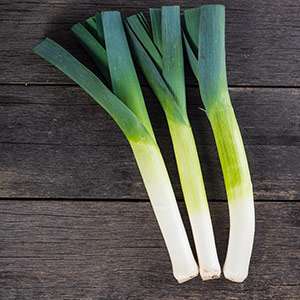 There are a number of pests that are difficult to control on site. Sucking parasites such as aphids, mites and bulb flies can destroy plants themselves or through viruses and bacteria carried on their legs. For example, mosaic is a virus carried by aphids. It is impossible to fight it; prevention is needed. To do this, use wood ash, dry mustard or ground red pepper: sprinkle them between the rows before loosening.
There are a number of pests that are difficult to control on site. Sucking parasites such as aphids, mites and bulb flies can destroy plants themselves or through viruses and bacteria carried on their legs. For example, mosaic is a virus carried by aphids. It is impossible to fight it; prevention is needed. To do this, use wood ash, dry mustard or ground red pepper: sprinkle them between the rows before loosening.
If pests have attacked a large area, use the insecticides “Iskra”, “Tanrek” or “Alatar” - these drugs successfully fight against aphids, mites, whiteflies and bulb flies in the garden. The pyrethroid drug “Vantex” can be used as a preventive measure in the fight against bulb fly.
If psyllids are found on leeks, the affected areas are sprayed with Karate Zeon for protection. To consolidate the effect, the procedure is repeated after two weeks.
Harvest and storage
At the beginning of September, early ripening varieties of leeks are harvested. Trying not to stain the space between the leaves with soil, dig the onion out of the ground. Trim the roots without touching the leaves - trimming them will cause the onion to dry out quickly.
It is best to store onions in a box with sand in a vertical position at a temperature no higher than +2…+3°C. In this form, the plant will retain its beneficial qualities as much as possible and can last up to 6 months.
What difficulties may there be when growing
There are no particular difficulties when growing leeks; there are some regional features that depend on the climatic conditions of a particular area.
In areas with a cold climate, a good harvest can only be obtained by seedling cultivation and only from early-ripening and some mid-ripening varieties, such as Columbus or Vesta - and this is with careful care and in closed ground.
Advice from experienced gardeners
To be able to grow leeks on your plot on the first try, use the recommendations of experienced gardeners:
- If the root of the plant was damaged during transfer to open ground, trim the leaves. This will direct forces to restore the root.
- Before transplanting the seedlings, the roots can be coated with a mixture of cow dung and clay in equal proportions. The plant will settle into its new location faster and more firmly.
- The deeper the grooves when planting seedlings, the longer the edible stem of the leek will be.
- When storing onions fresh, check them regularly. Remove dried, yellowed stems, otherwise you risk losing the entire harvest.
Reviews of leek varieties
Professionals and novice gardeners approve of many varieties of leeks. Many people try to grow it for the first time and are satisfied with the result:
Elena, Moscow: «Bandit is an excellent leek; I grew it for three years in a row until I ran out of seeds. He is squat, the leg is not long, like, for example, Karantansky and Kazimir, but plump. This year I bought seeds again and will grow them again.”
Angelina, Veliky Novgorod: “Last season I planted leeks Elephant Trunk. I recommend. The onion turned out good, as usual. Today I brought 2 pieces. from the basement in the garage. It is perfectly stored, the little green one sticks out in a bucket, sprinkled with sand and sawdust.”
Stepan, Novopolotsk, Belarus: “A lot depends on the type of leek. I grow summer varieties.For example, Columbus, which, according to reviews, is usually not stored. And I store it almost until May. All storage methods require specific conditions and are not suitable for amateur use. I retain up to 90% without much effort. The main thing is that after digging, the onion gives up excess water, which is responsible for the onset of rotting.”
Conclusion
Even a novice gardener can grow leeks, which are unique and useful in their qualities, in any region of Russia. From the variety of varieties, everyone will choose something that is suitable specifically for their growing conditions and will satisfy their needs and tastes.
Try growing leeks: it is likely that they will take their rightful place in your garden for a long time.